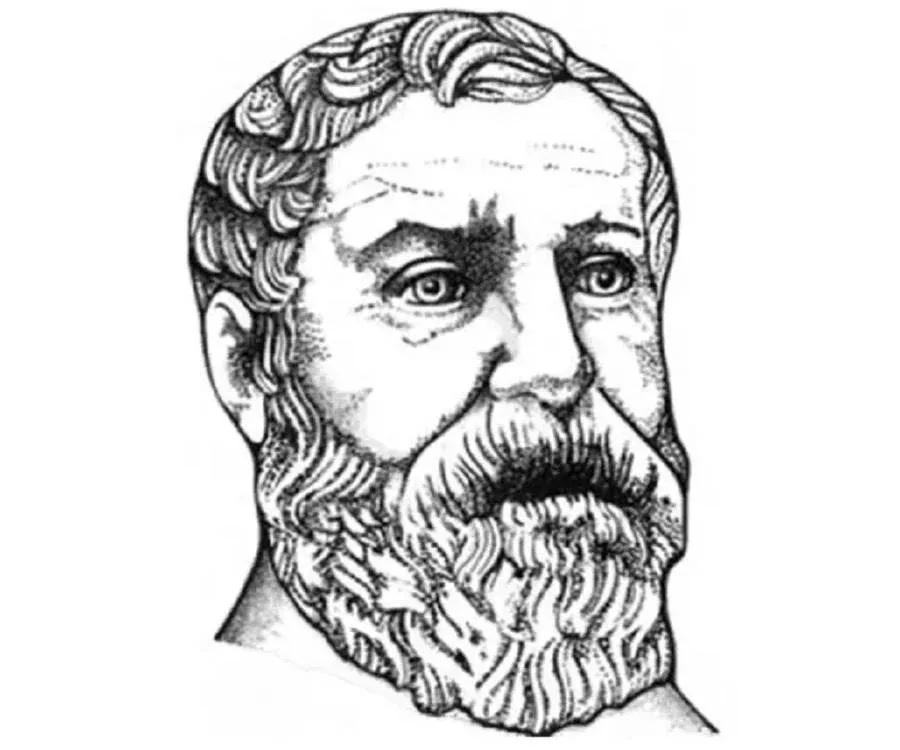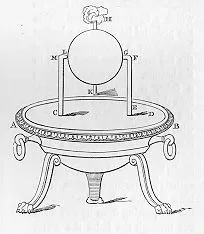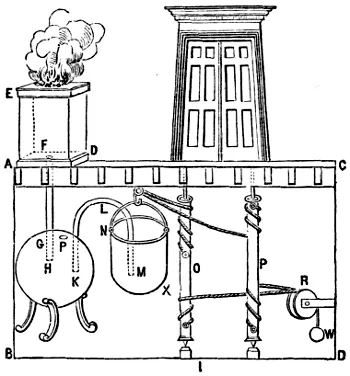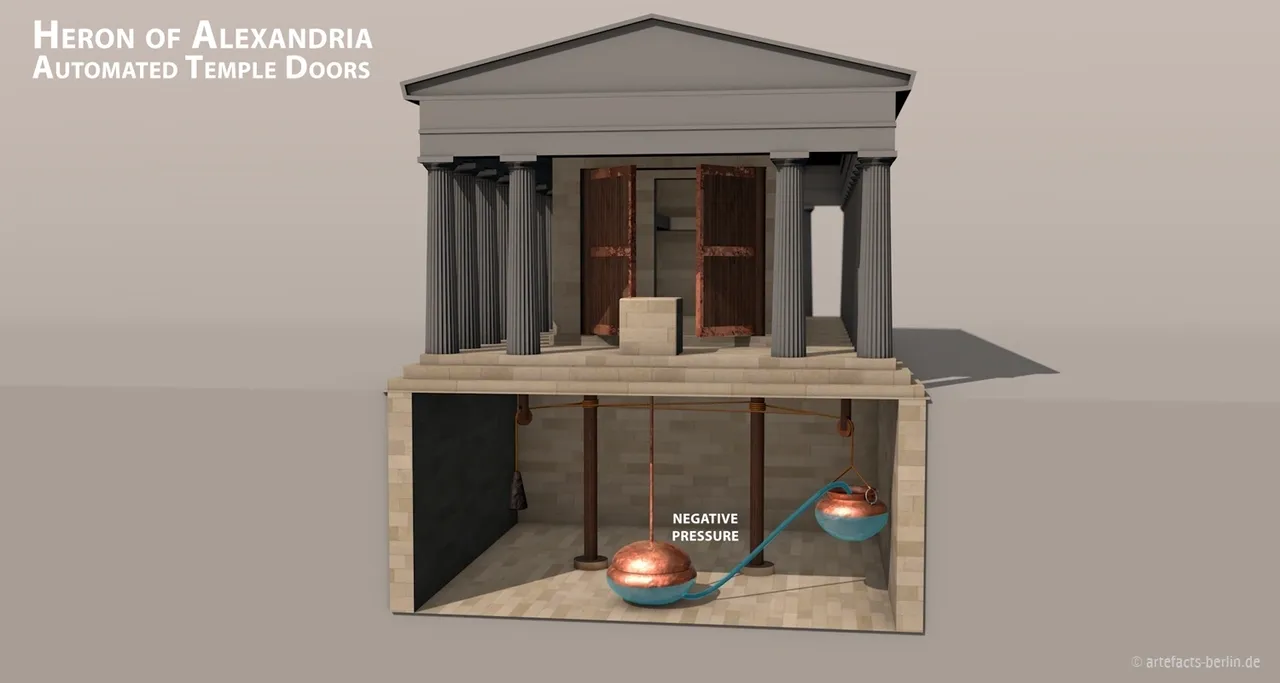Why is this in an edition of Technology Lost to Time, you may ask. Aren’t automatic doors powered by sensors and electricity? You hack, that’s at least 20th Century tech!

17th Century German depiction of Heron of Alexadria
Well dear reader, allow me to introduce another Greek wise guy named Heron of Alexandria. This man is credited with the invention of not only the automatic door, but also the vending machine, wind-powered organ, force pump, a self-filling wine bowl, and much more. Frankly, we have another Archimedes on our hands.Heron lived and breathed applied mathematics, which is the process of taking fancy numbers and using them in the real world. Ironically, Archimedes only did this begrudgingly, so it’s refreshing to see someone brimming with such gusto about the whole thing. Judging by his name, it isn’t difficult to figure out where he’s from.
He is reputed for having taught at the Museaum in 1st Century Roman Egypt at the Library of Alexandria. Much of what is left to us is in the form of lecture notes and other scraps in fields ranging from mechanics and physics to math and pneumatics. His work represents some of the earliest forays into cybernetics.
Looking into the foundations of these automatic doors was an interesting rabbit hole into the madness of Alice’s Wonderland. There is a multitude of automatic door installment companies with something to say about this guy on their blogs. It seems that Heron invented, or at least codified, the concept of an early steam engine called the aeolipile. This is however a similar situation to the Archimedes Screw, in which someone else may have invented it and this guy is more famous so his name was attached to it and subsequently given more credit than he actually deserved. In this case, the first description of the aeolipile comes to us thanks to Vitruvius’ De Architectura, which came out about several years before Heron was even born.
Vitruvius’ Description:
” Aeolipilae are hollow brazen vessels, which have an opening or mouth of small size, by means of which they can be filled with water. Prior to the water being heated over the fire, but little wind is emitted. As soon, however, as the water begins to boil, a violent wind issues forth.”
Heron’s Description:
“No. 50. The Steam-Engine. PLACE a cauldron over a fire: a ball shall revolve on a pivot. A fire is ignited under a cauldron, A B, (fig. 50), containing water, and covered at the mouth by the lid C D; with this the bent tube E F G communicates, the extremity of the tube being fitted into a hollow ball, H K. Opposite to the extremity

Let it be noted that I sourced both of these from Wikipedia, and for the sake of transparency, I am aware that it’s not necessarily a reliable source, but I did check out the citations and these descriptions do seem to hold up against them.
Essentially, Heron went into much further detail about the actual construction of such a device, suggesting he was well versed in their capabilities and practical applications, which would’ve stemmed from a life of at least tinkering with them. While I doubt that he invented the aeolipile, I am willing to give him contributor status solely because I’m a little salty about the fact that Vitruvius does this kind of thing a lot. Wherein he describes something but fails to go into that sweet juicy detail I crave. I’m specifically referring to Roman Concrete.
I admire Vitruvius for simplifying the concept, I just wish someone else had gone into further detail.
So, what does this have to do with automatic doors?
It seems that the aeolipile was the power source of these doors. The key component, if you will, and I would argue that it’s the real invention hidden behind the glamour of the doors. But, I am a man of my word, so on to the doors.
Here are a few diagrams I found of the system supposedly used for these automatic doors of a temple, though for the life of me, I couldn’t find the name of the temple.


I have no idea what the accuracy of this is, but I can understand the basic concept. As cool as automatic doors are, I think we’ve been sleeping on the fact that these designs are what inspired Thomas Watt to invent the modern steam engine centuries later, and thus, kick off the industrial era of mankind. Heron and Vitruvius contributed more than just some swanky doors, they contributed the foundation of the steam engine and the cornerstone of human industry in the future.
Quite an achievement indeed.
